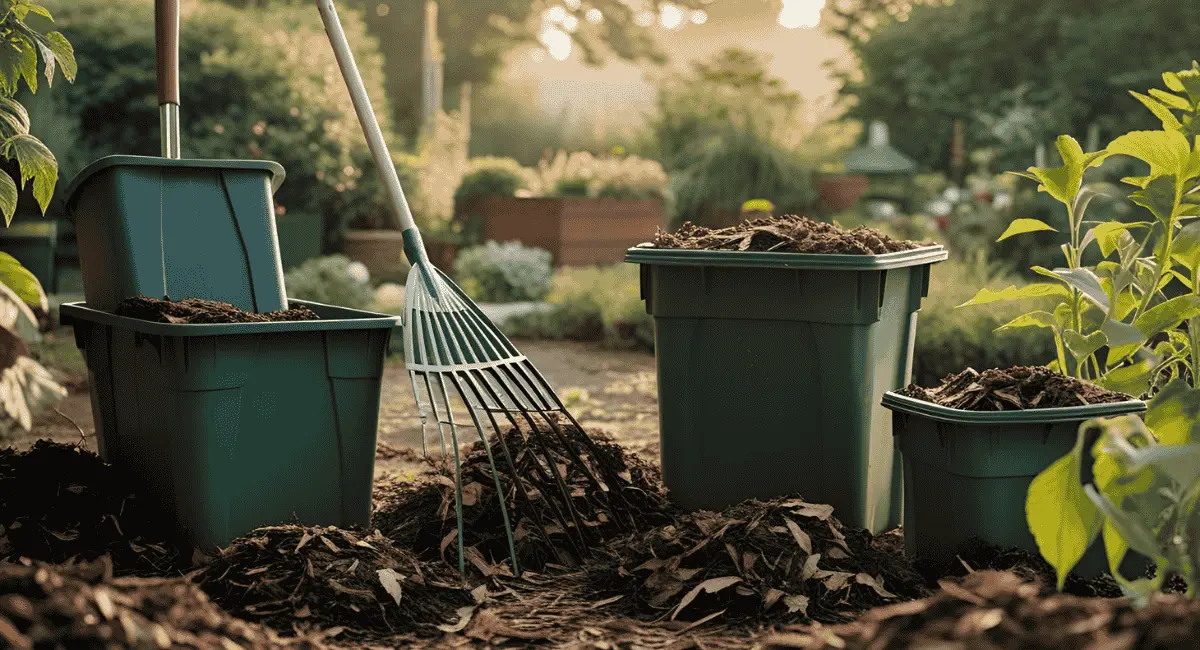Have you ever tried composting in a small apartment? I have. It was messy, smelly, and honestly, kind of a flop at first. But once I learned the right way to do it—and found out about fine leaf mold compost things changed. My plants looked healthier, the soil felt soft and rich, and there was no bad smell! If you want an easy, natural way to feed your garden, this is it.
Let’s talk about what fine leaf mold compost is, how to make it, and why your garden will love it.
What Exactly is Fine Leaf Mold Compost and Why is it Special?
Fine leaf mold compost is made from dead leaves that break down over time into a soft, crumbly, dark material. It looks like chocolate cake soil and feels spongy. It’s different from regular compost, which is made using food scraps, grass clippings, and other garden waste.
This compost is made up of organic matter that improves soil quality. It smells earthy, not bad, and doesn’t attract bugs like kitchen compost might. It’s perfect for gardeners who want a low-maintenance way to improve their soil naturally.
How is Leaf Mold Formed? Understanding Fungal Decomposition
Unlike regular compost, which relies on bacteria, fine leaf mold compost is broken down by fungi.This means fungi slowly break the leaves down. The fungi slowly digest the leaves and
turn them into rich, dark soil that helps your garden grow better. The process is slow but worth it. It usually takes 6 months to a year, depending on the leaf type and weather. No need for kitchen waste just leaves, moisture, and time.
Why Should You Use Fine Leaf Mold Compost in Your Garden?
1. Improve Soil Health and Texture
Fine leaf mold compost is a great soil conditioner. It makes the soil soft, crumbly, and airy, which improves soil structure. Plant roots grow better in loose soil, and it helps the soil hold onto nutrients.
2. Boost Moisture Retention for Less Watering
This compost is great at moisture retention. It holds water like a sponge, which means your plants stay hydrated longer, even in hot weather. It also helps with water conservation, which is super helpful if you’re gardening in dry places or during drought.
3. Feed the Soil with Beneficial Microbes
Fine leaf mold compost is full of tiny life forms called beneficial microbes. These microbes help break down organic material in the soil and make it easier for your plants to take in nutrients. This increases healthy life in the soil and helps your plants absorb more nutrients availability.
4. Strengthen Plant Immunity and Disease Resistance
Healthy soil means stronger plants. With all the organic matter and microbes in fine leaf mold compost, your plants get stronger and more resistant to pests and diseases. This leads to better disease resistance and fewer problems in your garden.
5. Eco-Friendly and Sustainable Gardening
This compost is 100% natural and supports sustainable gardening. You reuse leaves that would otherwise go to waste. It’s a win for your garden and for the planet.
Step-by-Step Guide: How to Make Fine Leaf Mold Compost at Home
Step 1: Gather Shredded Leaves in the Fall
Collect leaves in the fall when they are everywhere. Shredded leaves work better because they break down faster. You can use a lawn mower or leaf shredder to chop them up.
Step 2: Create a Compost Pile or Use a Bin
Make a leaf pile in a quiet corner of your yard or put them in a compost bin. The pile should be at least 3 feet wide and tall. Make sure it’s in a shady spot to help keep moisture in.
Step 3: Add Moisture and Let Nature Work
Spray the leaves with water to keep them damp not soaked. Fungi need moisture to work. If it gets dry, lightly water it again. Check every week or so.
Step 4: Turn the Pile for Better Airflow
Turn your pile with a pitchfork or shovel every 3–4 weeks to add air. This helps the fungi break the leaves down faster and prevents bad smells.
Step 5: Sift the Finished Product for a Fine Texture
After 6 months to a year, the leaves will look dark and crumbly. Sift the compost through a screen to get the fine leaf mold compost. The finer the compost, the better it works for pots and top dressing.
Easy Ways to Use Fine Leaf Mold Compost in Your Garden
1. Use as a Soil Conditioner for Better Soil Structure
Mix it into your garden soil to improve soil structure and drainage. It works great for clay soils, making them loose and easy to dig. Sandy soils also benefit because it holds water better.
2. Add to Potting Mixes for Healthier Houseplants
You can mix leaf mold compost into store-bought potting soil. It adds nutrients and helps the mix stay moist longer. Great for indoor plants that dry out quickly.
3. Use as Mulch to Protect and Feed Garden Beds
Spread a layer of compost on top of your soil like mulch. This helps keep the soil moist, blocks weeds, and slowly feeds your plants.It’s great for spreading on top of garden beds to feed your plants.
4. Use Around Trees and Shrubs as a Natural Fertilizer
Add it around the base of trees and shrubs toMake the soil richer and better for plant growth. It also keeps the roots cool in summer and warm in winter.
Common Mistakes to Avoid When Making Leaf Mold Compost
Mistake 1: Using Wet, Moldy Leaves Right Away
If the leaves are already moldy or too wet when you start, the pile can smell bad. Collect dry leaves and then add moisture slowly.
Mistake 2: Not Shredding the Leaves First
Whole leaves take a very long time to break down. Always shred the leaves to speed things up and get better results.
Mistake 3: Letting the Pile Dry Out Completely
Fungi need moisture to work. If your leaf pile gets too dry, the decomposition stops. Keep it damp by checking it once a week.
Why I Recommend Fine Leaf Mold Compost for Every Gardener
When I first tried composting, it didn’t go well. But making fine leaf mold compost turned things around. It was simple, smelled fine, and gave me amazing results.
My garden soil improved, my indoor plants looked happier, and I saved money on buying compost. I even shared some with my neighbors, and they loved it too!
If you want to try composting without the mess, this is the way to go. It’s natural, cheap, and great for your garden.
Start Making Fine Leaf Mold Compost Today!
Now that you know what fine leaf mold compost is and how to make it, why not give it a try? It’s easy, free, and super helpful for your plants.
Start collecting leaves this fall, shred them, and let nature do the work. In a few months, you’ll have black gold for your garden.
If you’ve already tried it or have questions, share your thoughts in the comments. Let’s grow together!


